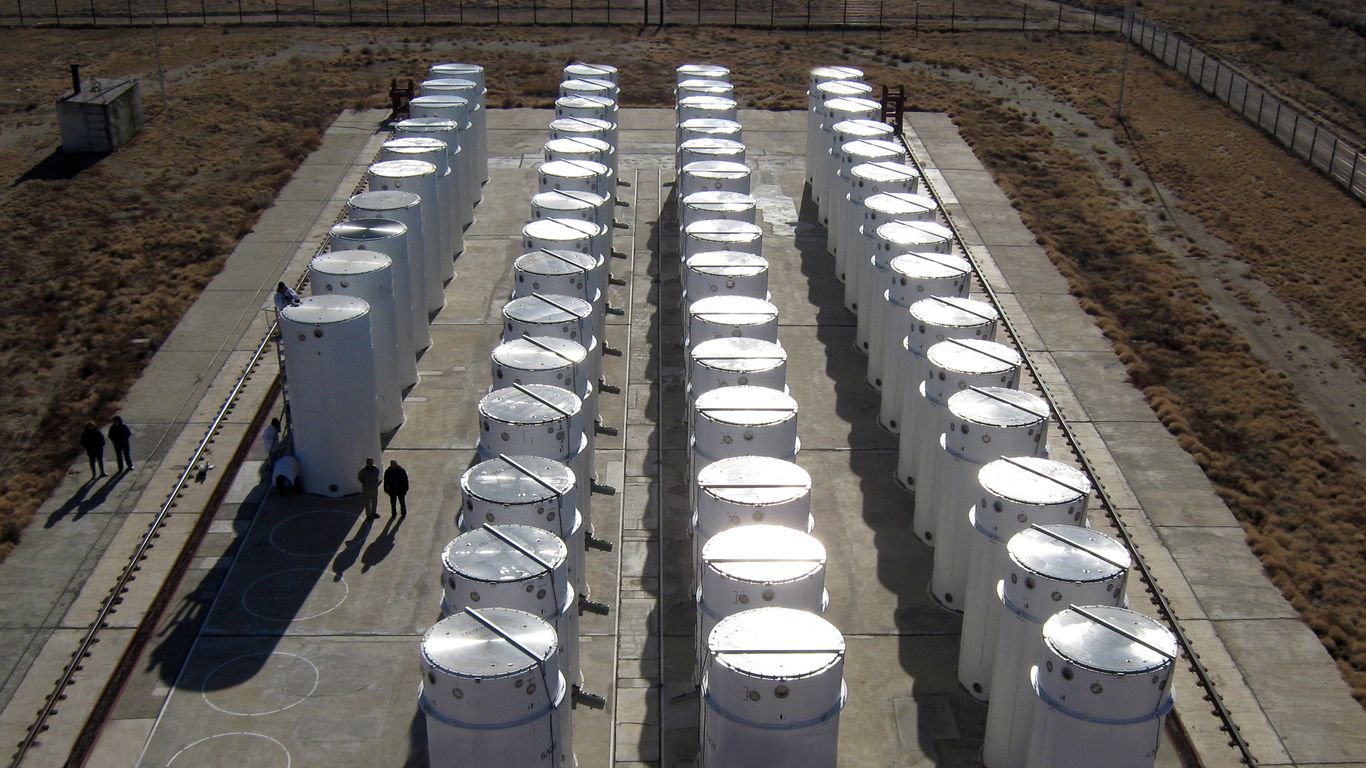
A forthcoming Trump administration plan to make Cold War-era plutonium available to power companies for reactor fuel deserves a close look, nuclear industry officials said Wednesday.
Why it matters: Experts in arms control and nuclear safety say the idea — which would repurpose plutonium from dismantled warheads — is costly and dangerous.
- They worry it could increase the likelihood that U.S. enemies could get their hands on the material used to build nuclear weapons.
- The Energy Department plans to announce it will soon seek proposals from industry, Reuters reported last week, citing a source who spoke on condition of anonymity.
Driving the news: Bradley Williams, an Idaho National Laboratory senior policy adviser and lead for energy policy and strategic analysis, said at a National Press Club breakfast that plutonium "may or may not be a broadly used fuel of the future" for commercial reactors.
- "An initial step that makes sense is, we have to dispose of this plutonium that the DOE has one way or another," Williams said. "We might as well get useful electricity out of it and demonstrate these advanced [nuclear] technologies."
- Williams is working with the administration to implement executive orders that President Trump signed in May to speed construction of advanced reactors at federal sites.
- Nuclear energy enjoys bipartisan support as a zero-carbon energy source that can meet rising demand from data centers and manufacturing. But cost challenges and fuel supply concerns around building new reactors have slowed development.
Catch up fast: An agreement in 2000 between Russia and the U.S. led to an effort to convert the leftover plutonium to mixed oxide fuel, or MOX, that could be used in nuclear plants.
- But the effort ran into serious cost overruns as well as other obstacles, and in 2018, the first Trump administration killed the contract for the MOX project.
- Since then, some plutonium has been trucked to New Mexico's Waste Isolation Pilot Plant (WIPP) — an underground burial site for materials used in making in nuclear bombs — after being diluted through a chemical process.
Zoom in: Despite the MOX program's problems, other DOE projects have had more success in researching ways to recycle nuclear materials, said John Kotek, the Nuclear Energy Institute's senior vice president for policy development and public affairs.
- "So it's not like these companies would be starting from scratch," Kotek said.
The other side: The concept faces numerous obstacles, said Ross Matzkin-Bridger, senior director for nuclear materials security at the nonprofit Nuclear Threat Initiative.
- "Plutonium material has proven to be far more of a liability than an asset, and it is hard to imagine that a private company would be willing to take that on their balance sheet," Matzkin-Bridger said.
- He also questioned whether it could lead to nuclear proliferation and what could happen to the plutonium if the effort proves unsuccessful.
- Burying it at the New Mexico site is a far cheaper and better solution, said Edwin Lyman, the Union of Concerned Scientists' director of nuclear power safety.
